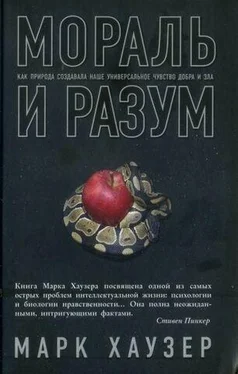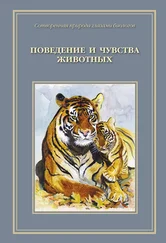Eisenberg N., Losoya S. & Spinrad T (2003). Affect and prosocial responding // R. J. Davidson & K. R. Scherer & H. H. Goldsmith (Eds.), Handbook of Affective Sciences (p. 787—803). New York: Oxford University Press.
Ekman P. (1985). Telling lies: Clues to deceit in the marketplace, marriage, and politics. New York: WW Norton.
Ekman P. (1992). An argument for basic emotions // Cognition and Emotion, 6, 169—200.
Ekman P., Friesen W. V & O'Sullivan M. (1988). Smiles while lying //Journal of Personality and Social Psychology, 54, 414—420.
Ekman R & O'Sullivan M. (1991). Who can catch a liar? // American Psychologist, 46, 913—920.
Ekman R, O'Sullivan M., Friesen W. V & Scherer K. R. (1991). Face, voice, and body in deceit //Journal of Nonverbal Behavior, 15, 125—135.
Ellis H. D. & Lewis M. B. (2001). Capgras delusion: a window on face recognition // Trends in Cognitive Science, 5, 149—156.
Elster J. (1979). Ulysses and the Sirens. Cambridge: Cambridge University Press.
Elster J. (2000). Ulysses Unbound. New York: Cambridge University Press.
Emery J. (2003). Reputation is everything. Available: http://www.worldandi.com/newho m e/public/2003/may/clpub.asp.
Emery N. J. & Clayton N. S. (2001). Effects of experience and social context on prospective caching strategies by scrub jays // Nature, 414, 443—446.
Engel H. (2002). Crimes of Passion: An Unblinking Look at Murderous Love. Westport, CT: Firefly Books.
Epstein J. (2003). Envy. Oxford: Oxford University Press.
Fairbanks L. A. (1996). Individual differences in maternal style of Old World monkeys // Advances in the Study of Behaviour, 25, 579—611.
Fairbanks L. A., Melega W. R, Jorgensen M. J., Kaplan J. R. & McGuire M. T. (2001). Social impulsivity inversely associated with CSF 5-HIAA and Fluoxetine exposure in vervet monkeys // Neuropsychopharmacology, 24, 370—378.
Fehr E. (2002). The economics of impatience // Nature, 415, 269—272.
Fehr E. & Fischbacher U. (2003). The nature of human altruism—Proximate and evolutionary origins // Nature, 425, 785—791.
Fehr E. & Gachter S. (2002). Altruistic punishment in humans // Nature, 415, 137— 140.
Fehr E. & H enrich J. (2003). Is strong reciprocity a maladaptation? On the evolutionary foundations of human altruism // P. Hammerstein (Ed.), The Genetic and Cultural Evolution of Cooperation (p. 55—82). Cambridge, MA: MIT Press.
Ferguson M. J. & Bargh J. A. (2004). How social perception can automatically influence behavior // Trends in Cognitive Science, 8, 33—38.
Fessler D. M. T. (1999). Toward an understanding of the universality of second order emotions // A. Hinton (Ed.), Beyond Nature or Nurture: Biocultural approaches to the emotions (p. 75—116). New York: Cambridge University Press.
Fessler D. M. T, Arguello A. P., Mekdara J. M & Macias R. Disgust sensitivity and meat consumption: A test of an emotivist account of moral vegetarianism // Appetite, 4/(1), 31—41.
Fessler D. M. T & Haley K. J. (2003). The strategy of affect: emotions in human cooperation // P Hammerstein (Ed.), Genetic and Cultural Evolution of Cooperation (p. 7—36). Cambridge, MA: MIT Press.
Fiddick L. (2004). Domains of deontic reasoning: resolving the discrepancy between the cognitive and moral reasoning literatures // The Quarterly Journal of Experimental Psychology, 57A, 447—474.
Fiddick L., Cosmides L. & Tooby J. (2000). No interpretation without representation: the role of domain-specific representations in the Wason selection task // Cognition, 77, 1—79.
Fischer J. M. & Ravizza M. (1992). Ethics: Problems and Principles. New York: Holt, Rinehart & Winston.
Fiser J. biAslin R. N. (2001). Unsupervised statistical learning of higher-order spatial structures from visual scenes // Psychological Science, 12, 499—504.
Fiske A. R (2002). Socio-moral emotions motivate action to sustain relationships // Self and Identity, 7, 169—175.
Fiske A. P. (2004). Four modes of constituting relationships // N. Haslam (Ed.), Relational Models Theory: A contemporary overview. Mahwah, NJ: Lawrence Erlbaum.
Fiske A. P. & Tetlock P. E. (2000). Taboo trade-offs: constitutive prerequisites for political and social life // S. A. Renshon & J. Duckitt (Eds.), Political Psychology: Cultural and Crosscultural Foundations (p. 47—65). London: Macmillan Press.
Fiske S. T (1998). Stereotyping, prejudice, and discrimination // D. T. Gilbert & S. T. Fiske & G. Lindzey (Eds.), The Handbook of Social Psychology (p. 357— 411). New York: McGraw Hill.
Fitch W. T, Hauser M. D. & Chomsky N. (2005). The evolution of the language faculty: clarifications and implications // Cognition, 97, 179—210.
Flanagan O. (1996). Self Expressions. Mind, morals and the meaning of life. New York: Oxford University Press.
Flombaum J. & Santos L. (2005). Rhesus monkeys attribute perceptions to others // Current Biology, 75, 1—20.
Foot P. (1967). The problem of abortion and the doctrine of double effect // Oxford Review, 5, 5—15.
Foster K. R. & Ratnieks F. L. W. (2000). Facultative worker policing in a wasp // Nature, 407 ,692—693.
Frank R. H. (1988). Passion Within Reason: The Strategic Role of the Emotions. New York: Norton.
Frank S. A. (1995). Mutual policing and repression of competition in the evolution of cooperative groups 11 Nature, 377 , 520—522.
Frazer J. G. (1910). A Treatise on Certain Early Forms of Superstition and Society. London: Macmillan.
Freire A., Eskritt M. & Lee K. (2004). Are eyes windows to a deceiver’s soul? Children’s use of another’s eye gaze cues in a deceptive situation // Developmental Psychology, 40, 1093—1104.
Frohlich N. & Oppenheimer J. A. (1993). Choosing Justice: An Experimental Approach to Ethical Theory. Berkeley: University of California Press.
Faster J. (1997). The Prefrontal Cortex: Anatomy, Physiology, and Neuropsychology of the Frontal Lobe. Philadelphia: Lippincott-Raven.
Galef В. G.,Jr. (1996). Social enhancement of food preferences in Norway rats: a brief review // С. M. Heyes & J. B. G. Galef (Eds.), Social Learning in Animals: The Roots of Culture (p. 49—64). San Diego: Academic Press.
Gallese V & Goldman A. (1998). Mirror neurons and the simulation theory of mindreading // Trends in Cognitive Science, 12, 493—501.
Gallese V, Keysets C. & Rizzolatti G. (2004). A unifying view of the basis of social cognition // Trends in Cognitive Science, 8 , 398—403.
Gallistel C. R. & Gelman R. (2000). Non-verbal numerical cognition: from reals to integers // TICS, 4, 59—65.
Gallup G. G.,Jr. (1970). Chimpanzees: self-recognition // Science, 167, 86—87.
Gallup G. G.,Jr. (1991). Toward a comparative psychology of self-awareness: Species limitations and cognitive consequences // G. R. Goethals & J. Strauss (Eds.), The Self: An Interdisciplinary Approach (p. 121—135). New York: SpringerVerlag.
Garvey S. R (1998). Can shaming punishments educate? // University of Chicago Law Review, 65, 733.
Читать дальше











